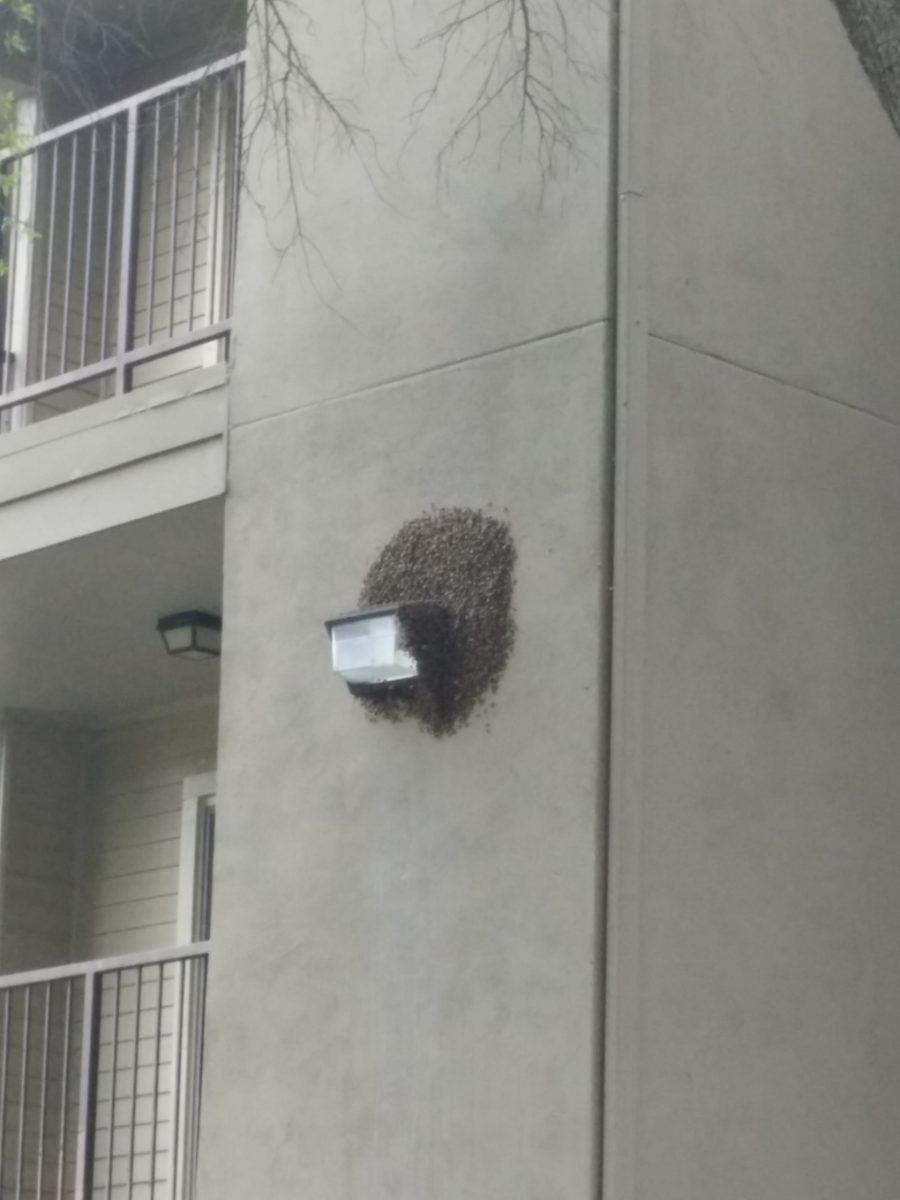Swarming and buzzing around a UTD apartment light fixture, a large cluster of bees found a temporary place to stay while they searched for a new home.
The large swarm of bees was found on the side of Building 4 in Phase 1 of the University Village apartments on March 26. The bees were gone by March 28.
Computer science junior Oskari Pirhonen saw the bees on the apartment while he and a friend were grilling outside. He said he saw the bees on a tree before they suddenly flew to the light where they swarmed.
“They were swarming in a tree next to the light fixture and then we just watched and they flew elsewhere, and we were like, ‘Oh, they left,’” he said. “But five minutes after and we saw them sitting there on the light fixture building a nest or something.”
He said they didn’t disturb him or his friend, and he didn’t recall anyone he knew who had been stung by the bees.
“I feel like if anyone complains about it, then they should just hire someone to relocate them somewhere else because bees are pretty important to the environment,” Pirhonen said. “Someone definitely shouldn’t call an exterminator on them.”
Scott Rippel, senior lecturer of biological sciences and beekeeper of the apiaries at UTD, manages eight hives spread around campus. He is usually called if there is a swarm of bees or a feral hive. If there is, he tries to remove them and adopt them into another existing hive or create a new one.
Rippel explained that bees swarm as part of a reproduction process. The parental, or the original hive splits into two groups, where a virgin queen bee stays in the original parental hive, and the previous queen leaves with up to 15,000 worker bees and settles somewhere nearby.
“Swarming is a normal process, it’s not something that is man-induced,” he said. “When the swarming process occurs, the queen is fairly big, and wherever she settles down, the other bees will coalesce on top of her because she releases a pheromone to protect her and keep her warm. Where she lands is random.”
In this process, the swarm will send scouts to find potential places for a new home. After this new location is found, the bees reach a decision on the home and relocate and can often travel as far as 5 miles away from the original parental hive to the new home.
Rippel said he came across a Reddit thread posted about the bees on the UTD Reddit page and went to go visit 14 hours after it was posted, but when he came to check for them again the next day, they had disappeared.
Director of Housing Operations Kevin Kwiatkowski said that University Housing received a call about the swarm of bees and then sent a pest control company to remove the swarm from the premises.
“I am fully aware of the need to save the bees, I understand it. But saving a bee colony on campus is not going to affect the agricultural system that we utilize for producing food,” Rippel said. “Just like dandelions are a beautiful flower, in a wrong place, they’re a weed.”













